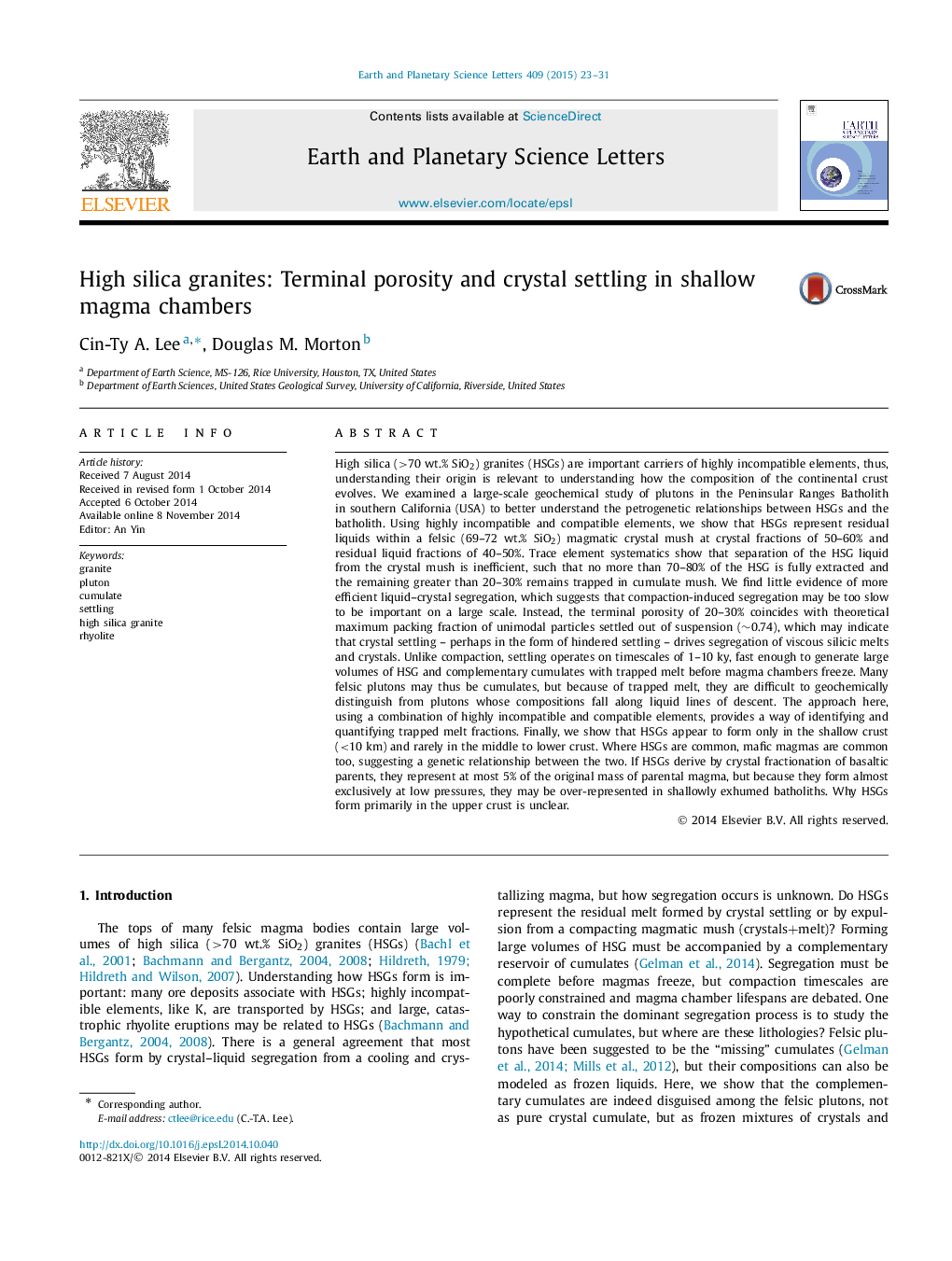| کد مقاله | کد نشریه | سال انتشار | مقاله انگلیسی | نسخه تمام متن |
|---|---|---|---|---|
| 6428808 | 1634747 | 2015 | 9 صفحه PDF | دانلود رایگان |
- High silica granites are residual liquids after crystallization from a felsic parental magma.
- Some felsic plutons are cumulates, but are geochemically similar to magmas because of trapped melt.
- The terminal amount of trapped melt in felsic cumulates is no less than 20-30%.
- Terminal trapped melt fraction corresponds to critical packing density.
- Felsic cumulates formed by crystal settling not compaction.
High silica (>70 wt.% SiO2) granites (HSGs) are important carriers of highly incompatible elements, thus, understanding their origin is relevant to understanding how the composition of the continental crust evolves. We examined a large-scale geochemical study of plutons in the Peninsular Ranges Batholith in southern California (USA) to better understand the petrogenetic relationships between HSGs and the batholith. Using highly incompatible and compatible elements, we show that HSGs represent residual liquids within a felsic (69-72 wt.% SiO2) magmatic crystal mush at crystal fractions of 50-60% and residual liquid fractions of 40-50%. Trace element systematics show that separation of the HSG liquid from the crystal mush is inefficient, such that no more than 70-80% of the HSG is fully extracted and the remaining greater than 20-30% remains trapped in cumulate mush. We find little evidence of more efficient liquid-crystal segregation, which suggests that compaction-induced segregation may be too slow to be important on a large scale. Instead, the terminal porosity of 20-30% coincides with theoretical maximum packing fraction of unimodal particles settled out of suspension (â¼0.74), which may indicate that crystal settling - perhaps in the form of hindered settling - drives segregation of viscous silicic melts and crystals. Unlike compaction, settling operates on timescales of 1-10 ky, fast enough to generate large volumes of HSG and complementary cumulates with trapped melt before magma chambers freeze. Many felsic plutons may thus be cumulates, but because of trapped melt, they are difficult to geochemically distinguish from plutons whose compositions fall along liquid lines of descent. The approach here, using a combination of highly incompatible and compatible elements, provides a way of identifying and quantifying trapped melt fractions. Finally, we show that HSGs appear to form only in the shallow crust (<10 km) and rarely in the middle to lower crust. Where HSGs are common, mafic magmas are common too, suggesting a genetic relationship between the two. If HSGs derive by crystal fractionation of basaltic parents, they represent at most 5% of the original mass of parental magma, but because they form almost exclusively at low pressures, they may be over-represented in shallowly exhumed batholiths. Why HSGs form primarily in the upper crust is unclear.
Journal: Earth and Planetary Science Letters - Volume 409, 1 January 2015, Pages 23-31
